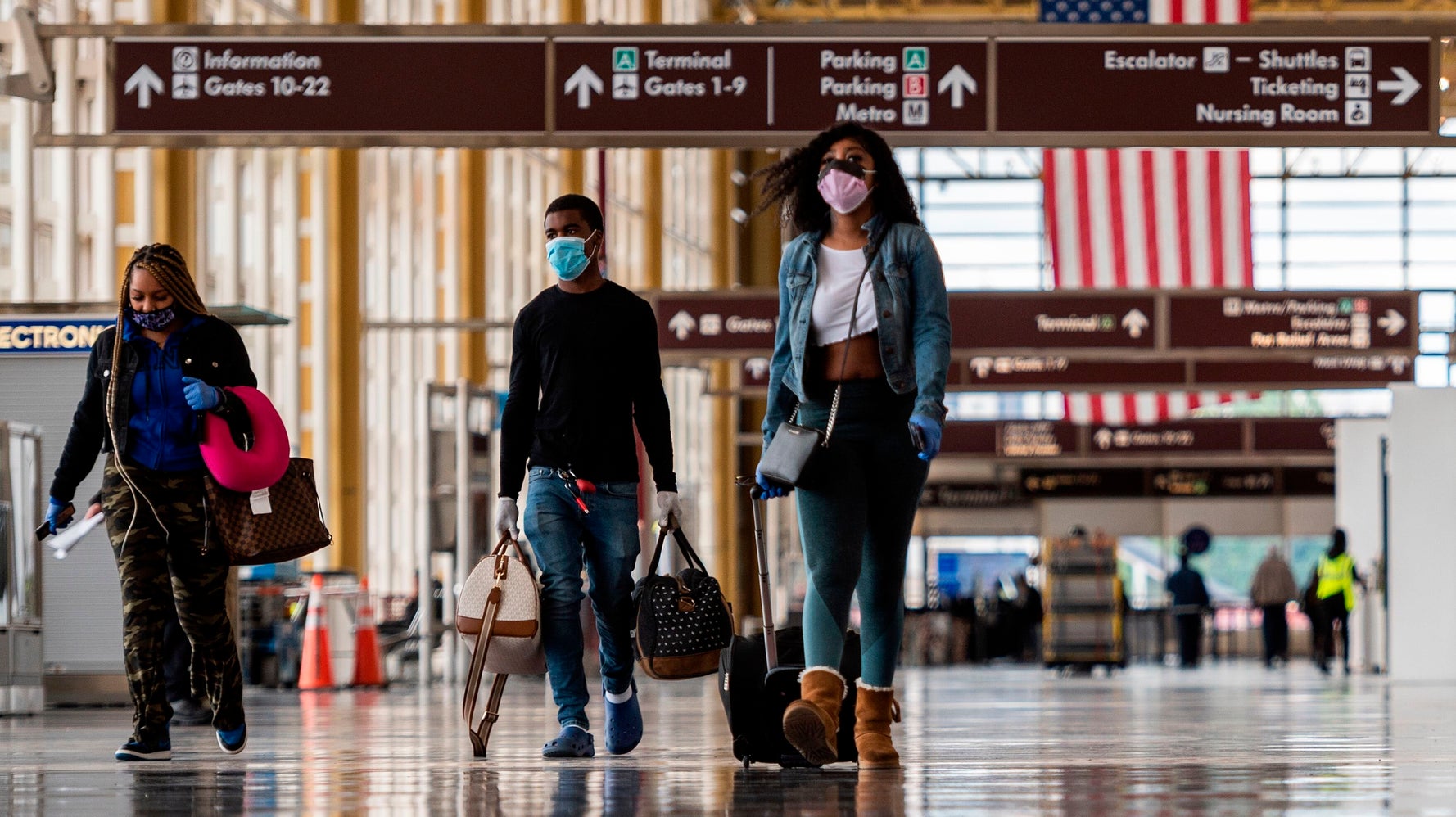Products You May Like
Just because summer has unofficially begun doesn’t mean summer travel should be starting up anytime soon. At this stage of the coronavirus pandemic, public health experts still do not recommend nonessential travel, and that includes flying.
“It is important to avoid air travel because it inherently involves spending time in places where others have passed through every day such as airports, public restrooms, and of course airplanes,” said Sachin Nagrani, a physician and medical director for the telemedicine and house call provider Heal.
Nevertheless, passengers are flying in the U.S. On Wednesday, the Transportation Security Administration screened 304,436 people at American airports. (On the same weekday one year ago, that number was more than 2.3 million, so air travel is still significantly down.)
If you must take a flight at this time, there are ways to mitigate the risks and help protect your health and safety and that of your fellow travelers. Below, Nagrani and Jeremy Tarr, digital editorial director of Fodor’s Travel, share their guidance for safe air travel right now.
Prepare for it to feel different.
“I think everyone needs to realize that it’s going to be very, very different than what they’re used to,” said Tarr. “It’s going to feel weird, it might feel uncomfortable, and, depending on the person, it might feel really scary.”
Still, he added, most airlines are making an effort to keep passengers feeling safe and are receptive to concerns.
“Research what your airline has done before you book your flight and especially before you board,” he suggested.
Choose a safe transit method to the airport.
“If you must fly, consider your local travel method to and from the airport and any rules that the airport may have instituted for safety, such as modified pick-up and drop-off procedures, which can be found on the airport website,” Nagrani advised.
If possible, drive yourself to the airport or have someone in your household drop you off. You can take car services like Uber and Lyft, which require drivers and passengers to wear face masks, but you may want to wipe down your surroundings. Public transit is less costly but exposes you to more risk.
Wear a mask at all times.
To slow the spread of the virus, public officials advise wearing a mask in public spaces, including airports and airplanes. Most airlines mandate that passengers wear masks for the duration of their flights, and many airports require them inside the terminal.
“Wear a mask at all times, unless told by TSA or some other official to lower it for identification purposes,” Tarr advised. It may not be the most comfortable accessory for long periods of time, but this is an important way to protect the safety of you and your fellow travelers.
Bring your own provisions.
To minimize risk, airlines have severely limited their food and beverage services, so be sure to fill your water bottle at the airport to stay hydrated on board. Consider taking some vitamin C and other immune-boosting vitamins or nutrients before the journey, too.
Many airport shops and restaurants are still closed, so you may also want to bring your own snacks from home for your travels.

Social distance as best you can.
“Airports were never particularly fun, and now they’re even worse. But the key is to follow the same protocols you do pretty much everywhere else right now,” Tarr noted. “Keep your distance, and if someone else isn’t keeping their distance, politely say something.”
Plexiglass partitions between passengers and crew are more common, and there are some changes in the security processes, like more staggered lanes and spacing between individuals.
Practice social distancing to the best of your ability at the gate and throughout the boarding process, which may be a little different as well.
“One thing you’ll most likely experience is that planes are being boarded from the rear to ensure that passengers limit interactions with one another,” said Tarr.
Brace for close quarters.
While there are significantly fewer people flying right now, there are also fewer flights and routes in service, so planes aren’t as empty as they looked in mid-March.
In fact, some passengers on recent flights have complained on Twitter about the number of people on board. If you’re concerned about in-flight spacing, you can discuss your options with airline employees.
“Talk to the flight crew and to see what can be arranged,” said Tarr. “United is sending alerts to passengers 24 hours in advance if their flight hits 70% capacity and is allowing you to choose a different flight.”
Clean your hands frequently.
The TSA is now allowing each passenger to carry one 12-oz. container of hand sanitizer through security, so you’ll be able to disinfect your hands frequently. Many airports also have sanitizer stations in the terminals.
Tarr also recommends proper hand-washing at the airport. “I know airport bathrooms are often shockingly, revoltingly disgusting ― but most of them have sensors for soap and water,” he said.
Limit touching surfaces.
“Before travel, consider checking in online and downloading a boarding pass for low-touch experience,” Nagrani advised. Avoid touching any surfaces unless needed.
You can also cut down on the risk of touching surfaces by wearing gloves, but the CDC guidance doesn’t deem them necessary.
Wipe down your seat area.
You don’t have to go full-on Naomi Campbell, but it doesn’t hurt to wipe down your seat area when you board a flight.
Many airlines have shared ways they’re stepping up their cleaning procedures, with measures like high-grade disinfectant, more frequent cleanings and electrostatic spraying.
Keep up with the latest guidelines.
As experts learn more about the novel coronavirus and the disease it causes, guidelines change.
Check for updates on the CDC’s list of considerations for potential travelers as you make decisions regarding your excursions.

